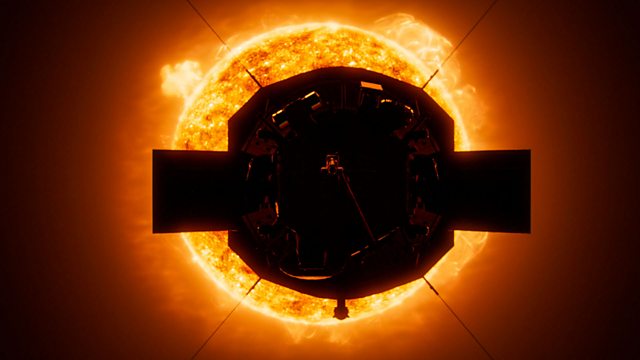Universe – The Sun: God Star episode 1: Professor Brian Cox begins his epic exploration of the cosmos with a hymn to the great luminous bodies that bring light and warmth to the universe: the stars.
It is estimated that there are two hundred trillion stars in the universe, each playing their part in an epic story of creation – a great saga that stretches from the dawn of time, with the arrival of the first star, through diverse generations until the arrival of our own star, the sun, and a civilisation that has grown up in its light.
Universe – The Sun: God Star episode 1
The Sun is the star at the center of the Solar System. It is a nearly perfect ball of hot plasma, heated to incandescence by nuclear fusion reactions in its core, radiating the energy mainly as visible light, ultraviolet light, and infrared radiation. It is by far the most important source of energy for life on Earth. Its diameter is about 1.39 million kilometres (864,000 miles), or 109 times that of Earth. Its mass is about 330,000 times that of Earth; it accounts for about 99.86% of the total mass of the Solar System. Roughly three quarters of the Sun’s mass consists of hydrogen (~73%); the rest is mostly helium (~25%), with much smaller quantities of heavier elements, including oxygen, carbon, neon and iron.
The Sun is a G-type main-sequence star (G2V) based on its spectral class. As such, it is informally and not completely accurately referred to as a yellow dwarf (its light is closer to white than yellow). It formed approximately 4.6 billion years ago from the gravitational collapse of matter within a region of a large molecular cloud. Most of this matter gathered in the center, whereas the rest flattened into an orbiting disk that became the Solar System. The central mass became so hot and dense that it eventually initiated nuclear fusion in its core. It is thought that almost all stars form by this process.
The Sun’s core fuses about 600 million tons of hydrogen into helium every second, converting 4 million tons of matter into energy every second as a result. This energy, which can take between 10,000 and 170,000 years to escape the core, is the source of the Sun’s light and heat. When hydrogen fusion in its core has diminished to the point at which the Sun is no longer in hydrostatic equilibrium, its core will undergo a marked increase in density and temperature while its outer layers expand, eventually transforming the Sun into a red giant. It is calculated that the Sun will become sufficiently large to engulf the current orbits of Mercury and Venus, and render Earth uninhabitable – but not for about five billion years. After this, it will shed its outer layers and become a dense type of cooling star known as a white dwarf, and no longer produce energy by fusion, but still glow and give off heat from its previous fusion.
Star
A star is an astronomical object consisting of a luminous spheroid of plasma held together by its own gravity. The nearest star to Earth is the Sun. Many other stars are visible to the naked eye at night, but due to their immense distance from Earth they appear as fixed points of light in the sky. The most prominent stars are grouped into constellations and asterisms, and many of the brightest stars have proper names. Astronomers have assembled star catalogues that identify the known stars and provide standardized stellar designations. The observable universe contains an estimated 1022 to 1024 stars, but most are invisible to the naked eye from Earth, including all individual stars outside our galaxy, the Milky Way.
A star’s life begins with the gravitational collapse of a gaseous nebula of material composed primarily of hydrogen, along with helium and trace amounts of heavier elements. The total mass of a star is the main factor that determines its evolution and eventual fate. For most of its active life, a star shines due to thermonuclear fusion of hydrogen into helium in its core, releasing energy that traverses the star’s interior and then radiates into outer space. At the end of a star’s lifetime, its core becomes a stellar remnant: a white dwarf, a neutron star, or, if it is sufficiently massive, a black hole.
Almost all naturally occurring elements heavier than lithium are created by stellar nucleosynthesis in stars or their remnants. Chemically enriched material is returned to the interstellar medium by stellar mass loss or supernova explosions and then recycled into new stars. Astronomers can determine stellar properties including mass, age, metallicity (chemical composition), variability, distance, and motion through space by carrying out observations of a star’s apparent brightness, spectrum, and changes in its position on the sky over time.
Professor Brian Cox – Universe – The Sun
Brian Edward Cox (born 3 March 1968) is an English physicist and former musician who is a professor of particle physics in the School of Physics and Astronomy at the University of Manchester. He is best known to the public as the presenter of science programmes, especially the Wonders of… series and for popular science books, such as Why Does E=mc²? and The Quantum Universe.
Cox has been described as the natural successor for the BBC’s scientific programming by both David Attenborough and Patrick Moore. Before his academic career, Cox was a keyboard player for the British bands D:Ream and Dare.




